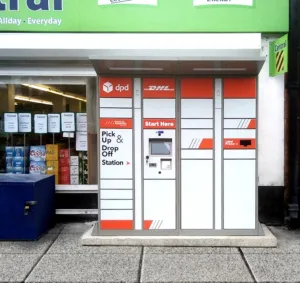By Prashanth Nanjundappa, VP, Product Management at Progress
The shift in computing infrastructure from the cloud to the edge has led to explosive growth and transformation in the retail industry. And it’s a trend set to increase. The global smart retail market size was valued at USD 30.25 billion in 2022 and is expected to grow at a compound annual growth rate (CAGR) of 29.1% from 2023 to 2030. IDC predicts that by 2024, the number of apps at the edge will increase by 800%.
Yet before retailers rush headlong into edge technologies, they should be aware of some challenges to efficiently manage their growing retail edge device footprint. With the evolving plethora of edge devices such as point of sale systems, self-checkout devices, cash registers, printers and smart cameras, retailers will need to implement a coordinated DevSecOps approach in order to provide seamless customer experiences. Any potential upgrade failures or performance issues can result in sales slowdowns that impact critical customer satisfaction and loyalty.
Challenges for edge devices management
In the retail tech environment, the problem at the edge is bigger than that of the traditional data centre/cloud because the latter’s servers have stable internet connectivity and no direct interaction with users. This renders them less susceptible to security misconfigurations and threats. However, every issue at the edge requires manual intervention and is exacerbated due to issues such as:
- Connectivity, disk space and power – In store or warehouse environments, internet connectivity is often unpredictable, with poor Wi-Fi leading to frequent download failures. When combined with limited disk space and computing power on devices, failures are even more likely. With technical support staff usually based remotely, it’s down to help desk calls from the stores themselves to flag and resolve any issues.
- Lack of visibility – Often, teams lack visibility of what’s going on with devices in remote stores, lacking a central view of the overall health – uptime, security, deployment success and app versions – of their devices. Retail applications and updates may be deployed to devices on a wing and prayer – but if the device is shut down or undergoing a restart, this potential failure leaves the Ops team in the dark.
- Misconfigurations and security issues – A device in a store or warehouse setting can be affected by various incidents such as physical damage, unintentional alteration of settings by employees, or even theft. It’s likely that multiple personnel have access to the same device, which increases security risks, potentially exposing sensitive data such as customer identification and credit card information.
Building more effective edge application delivery
Here are some key ways for dev teams to orchestrate a more efficient and frictionless edge application delivery, through improved team collaboration and incorporating some DevOps best practices:
- Improve team collaboration
To transform software distribution at the edge, IT should share the responsibility of application deployment and management between dev, security and Ops teams. Every developer should package their application with all required build and runtime dependencies as per guidelines set up by Ops teams. By including security policies in a human readable code-first manner, it’s easier to review and make changes.
By including all build and runtime dependencies of the application while packaging, Ops
teams will reduce testing effort for the Dev teams, and ensure the application runs reliably and consistently when deployed. Packaging applications in a lightweight manner means they can be deployed easily and run on devices with limited disk space.
- Do more with less
To focus on improving customer experiences, rather than configuring devices, IT teams should build, deploy and run applications as code to manage software at scale and minimise errors. Additionally, they should specify checks and conditions to perform flexible and controlled upgrades so that upgrades can happen without impacting business operations, such as order processing or device restarts. In this way, the system can pause updates during critical tasks and resume once the task is complete. This will help them to successfully complete updates and avoid failures.
- Prioritise edge security and Zero Trust
Device security is now table stakes to mitigate the risk of security breaches through your edge devices. Retailers should configure device settings, conduct regular compliance checks and automate the resolution of misconfigurations to ensure device security and compliance. As a precaution, you should also connect only a limited number of devices to the central server.
Besides the scale of devices retailers are dealing with, their geographical distribution also increases the complexity of managing security, making it harder to detect malicious activities. Embracing Zero Trust principles in your retail device management can help ensure that all the devices are properly authenticated and access is restricted.
- Take a co-ordinated DevSecOps approach
To effectively manage software on edge devices, retail organisations will need to implement a coordinated DevSecOps approach. A unified toolchain and process that can deploy applications, manage device configurations and security, and offer the same reliability and scalability as inside the data centre/cloud can reduce the learning curve, allowing teams to get started quickly, streamline the experience, and reduce the overall load on IT/Ops teams.
Innovating to elevate customer experiences
Many ecommerce brands invest significant time and expertise in manually managing software on retail edge devices or navigating edge computing challenges. Despite these efforts, they encounter deployment and security issues that impede innovation and growth.
Retailers should invest in innovating and creating systems that provide outstanding customer experiences rather than being preoccupied with deploying software, configuring devices, and ensuring their security, particularly as the number of smart devices in stores and warehouses continues to increase.










